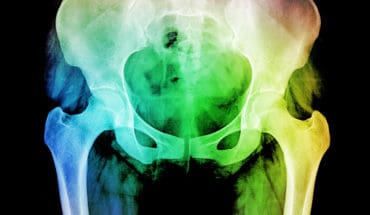New findings about brain tumour development could lead to more effective treatment. For the first time in the world, an international study team with substantial participation from researchers from the Comprehensive Cancer Center (CCC) of MedUni Vienna and Vienna University Hospital identifies the molecular differences between individual tumour cells in ependymomas, which are an aggressive type of brain tumour. The researchers further demonstrate that ependymomas develop in a specific stem cell niche of the brain. These findings could explain why some ependymomas behave very aggressively and are difficult to treat, while others are associated with a better prognosis. The therapeutic approaches derived from the findings have proven highly promising in preliminary laboratory tests. The paper has now been published in the leading journal “Cancer Cell“.
Ependymomas are rare brain tumours that can occur in children and adults alike. Moreover, this group of tumours is heterogeneous and it has not been known until now why some have a good prognosis and some follow an extremely aggressive course, or why paediatric ependymomas are frequently associated with a poor prognosis.
The very latest analytical tools
The recently published study used cutting-edge methods, such as single cell sequencing, to conduct genome-wide analysis of individual tumour cells and to describe their molecular biological characteristics. The group found that ependymomas are very heterogeneous and consist of many cells with different characteristics, which complicates their treatment and might be the reason for chemotherapy resistance. In the course of their study, the research team examined both tumours with good and bad prognosis. A large proportion of the patients whose tumours were studied were recruited into the study at the MedUni Vienna (20 out of 28). This effort was enabled through an intense collaboration with Mariella Filbin, Adjunct Professor of the Medical University of Vienna and Assistant Prof. at the Dana-Farber Cancer Institute and Harvard Medical School and/or the Broad Institute of MIT in Boston
One of the researchers’ important findings is that ependymoma cells develop from a specific stem cell niche of the brain. Hence, they often exhibit stem cell characteristics. Stem cells have the ability to replace other cells in the body and to mature into body cells with different functions (e.g. nerve cells). Experts call this process differentiation. While they are still immature, that is to say undifferentiated, they are essentially capable of unlimited proliferation. If the cells maintain their stem cell characteristics, particularly aggressive forms of cancer develop.
Johannes Gojo, consultant and researcher at the Department of Pediatrics and Adolescent Medicine of MedUni Vienna and Vienna University Hospital and at MedUni Vienna’s Institute of Cancer Research, member of the CCC and of the Comprehensive Center for Pediatrics (CCP) of MedUni Vienna and Vienna University Hospital and lead author of the study explains: “We saw that the individual cells of ependymomas go through different stages of development inside the tumour. Those tumors with an aggressive course have many immature cells, so that they are very similar to stem cells. Tumours in which a majority of the cells were in a mature state, had a more favourable prognosis. This finding could provide us with a starting point for new treatment strategies.”
It also explains why ependymomas often behave more aggressively in children than in adults: in children, the proportion of undifferentiated, stem-cell-like ependymoma cells is higher than in adults.
More effective treatment approaches
Says Gojo: “Furthermore, we were able to obtain accurate information about the molecular biological characteristics of tumour cells, which likewise enables us to derive new therapeutic approaches. Initial tests in this direction are highly promising but still require more detailed investigation.”
International collaboration
The study is a joint project between MedUni Vienna, Dana-Farber Cancer Institute and Harvard Medical School and/or the Broad Institute of MIT in Boston and the German Cancer Research Centre and/or Hopp Paediatric Cancer Centre in Heidelberg.
Service
Single-cell RNA-seq reveals cellular hierarchies and impaired developmental trajectories in pediatric ependymoma. J. Gojo, B. Englinger, L. Jiang, J.M. Hübner, M.L. Shaw, O.A. Hack, S. Madlener, D. Kirchhofer, I. Liu, J. Pyrdol, V. Hovestadt, E. Mazzola, N.D. Mathewson, M. Trissal, D. Lötsch, Ch. Dorfer, Ch. Haberler, A. Halfmann, L. Mayr, A. Peyrl, R. Geyeregger, B. Schwalm, M. Mauermann, K.W. Pajtler, T. Milde, M.E. Shore, J.E. Geduldig, K. Pelton, Th. Czech, O. Ashenberg, K.W. Wucherpfennig, O. Rozenblatt-Rosen, S. Alexandrescu, K.L. Ligon, St.M. Pfister, A. Regev, I. Slavc, W. Berger, M.L. Suva, M. Koo, M.G. Filbin.
DOI: https://doi.org/10.1016/j.ccell.2020.06.004
- Breaking the ice for men’s mental health - 26th December 2025
- New bowel cancer test for early detection - 26th December 2025
- New method accelerates resistance testing in UTIs - 26th December 2025







